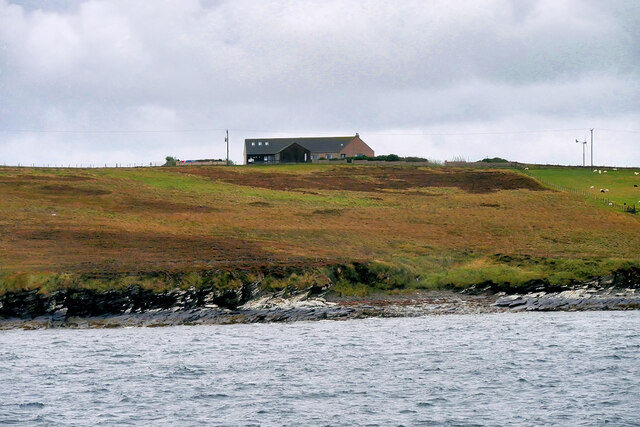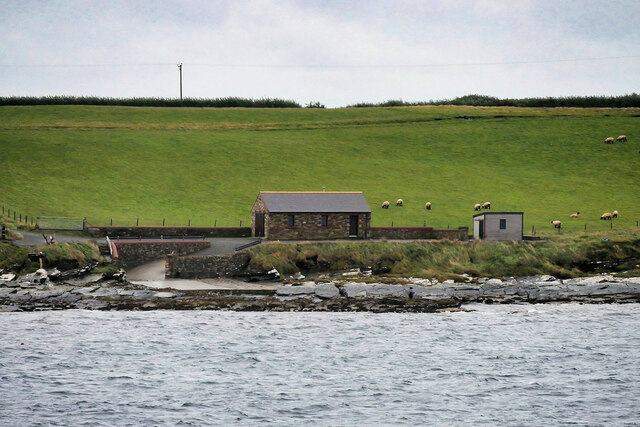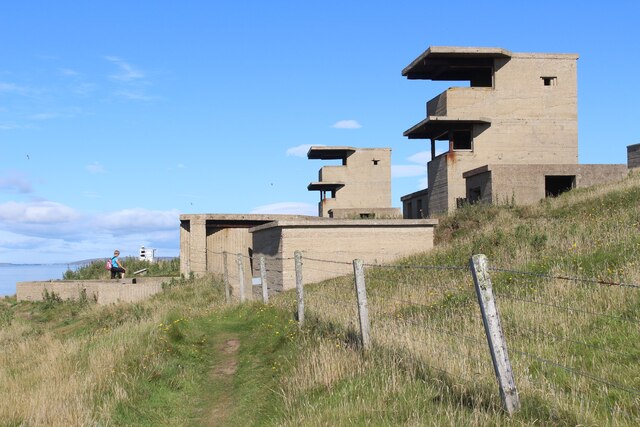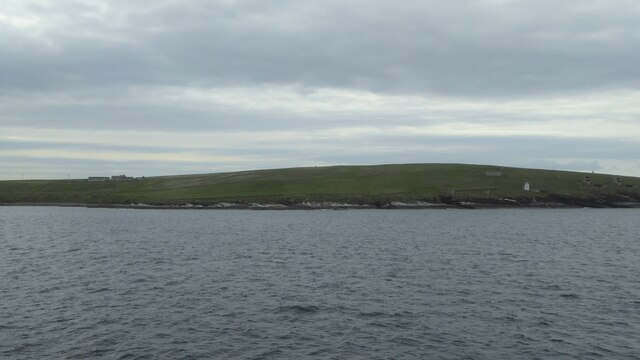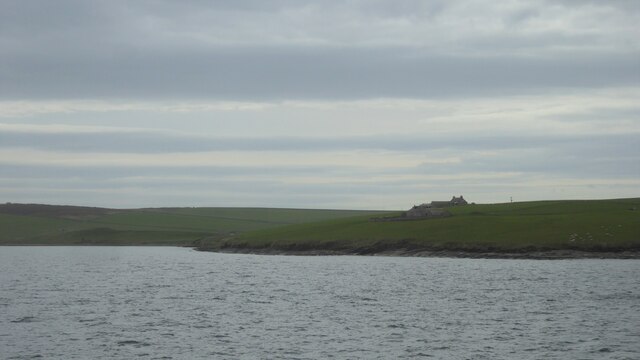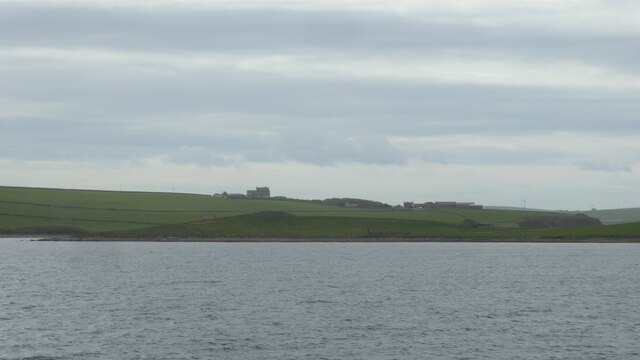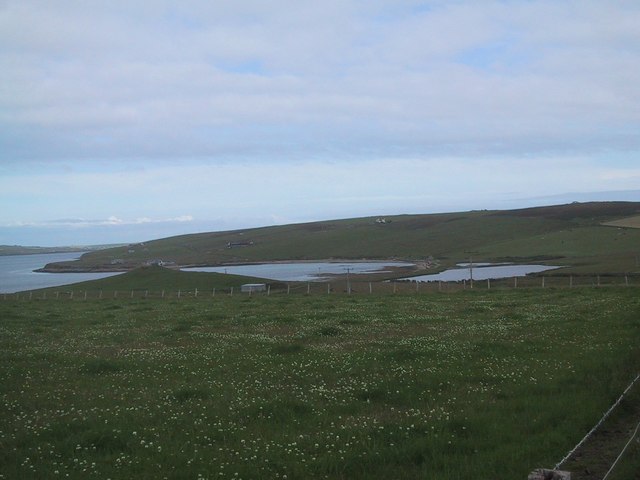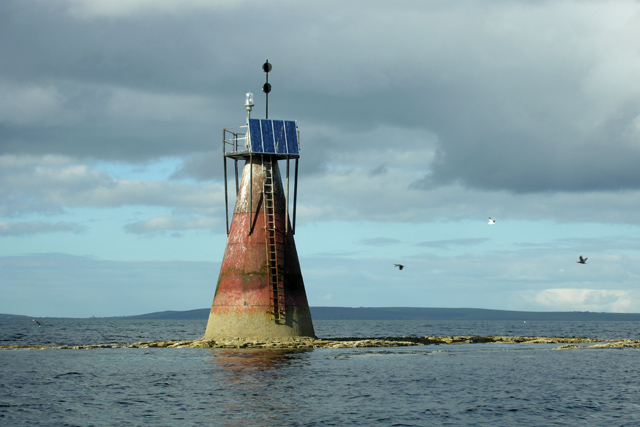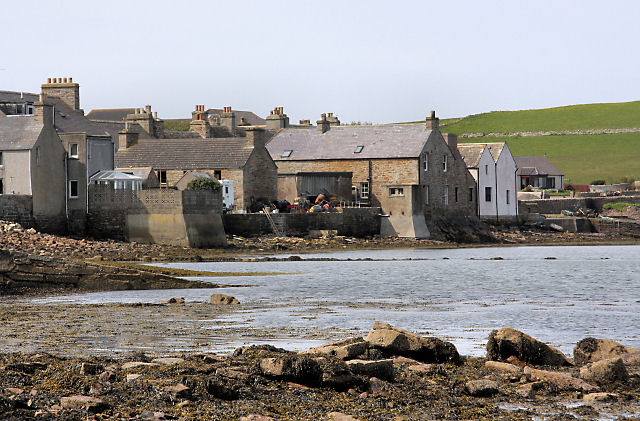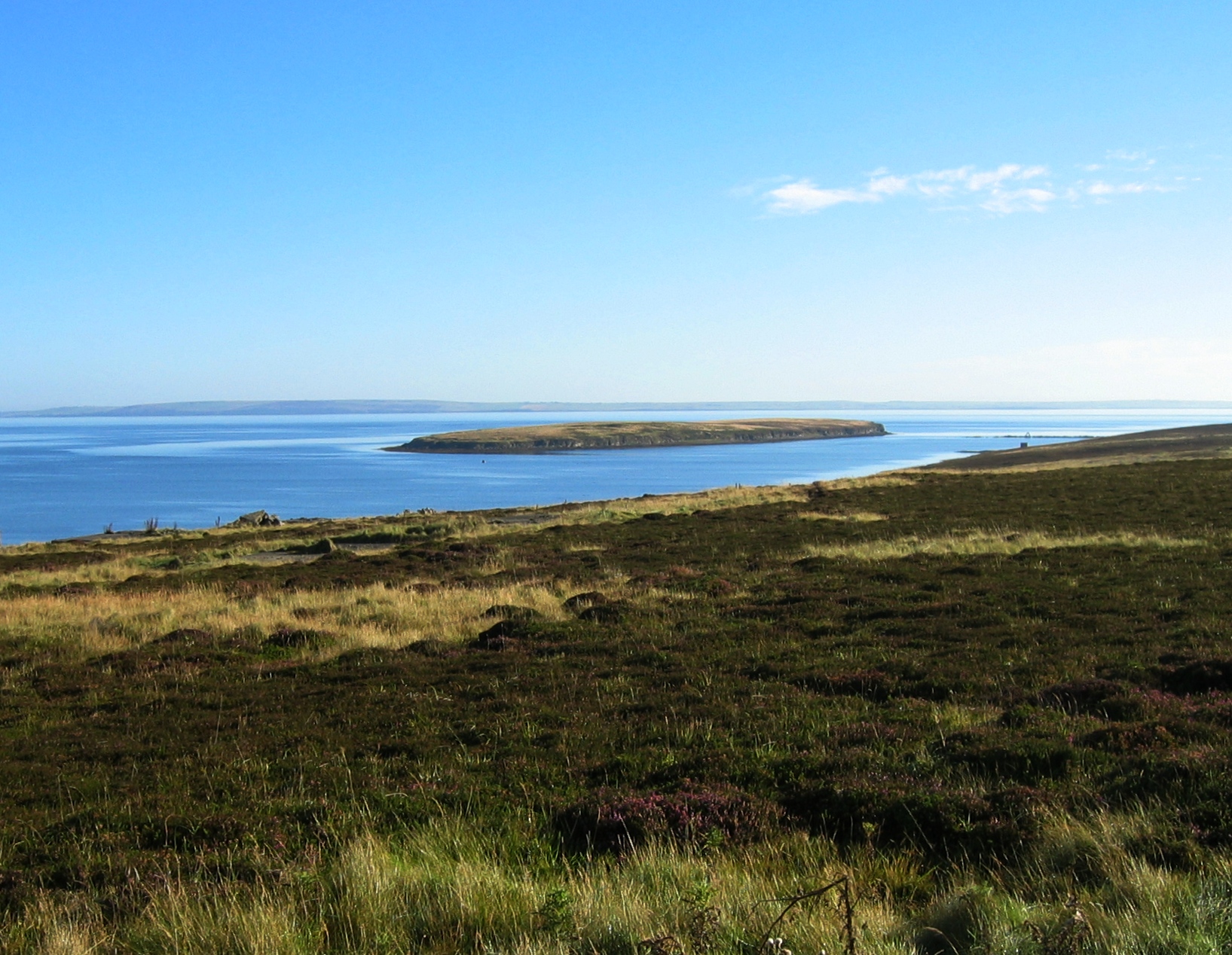Vamh
Coastal Feature, Headland, Point in Orkney
Scotland
Vamh
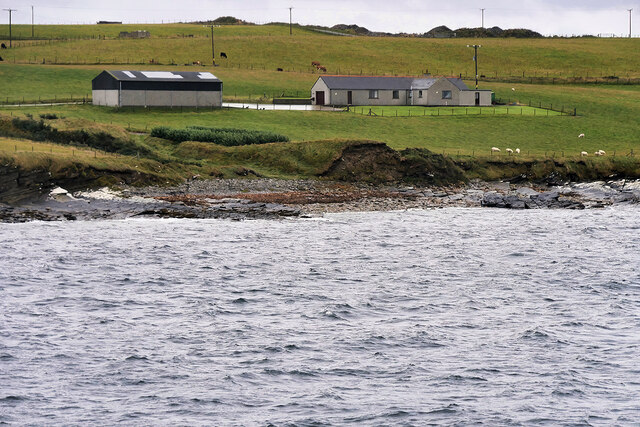
Vamh is a prominent headland located in Orkney, a group of islands in Scotland. Situated along the rugged and picturesque coastline, this coastal feature offers stunning views of the North Sea and the surrounding landscape. Vamh is known for its dramatic cliffs that rise steeply from the sea, creating a striking and imposing sight.
The headland is characterized by its rocky terrain, which is composed of layers of sedimentary rocks formed millions of years ago. These rocks exhibit various colors, ranging from shades of gray to brown, and are often covered in vibrant green moss and hardy vegetation.
Vamh serves as an important geographical landmark in the area, providing a natural boundary between two adjacent bays. Its strategic location has made it a significant navigational point for sailors and fishermen throughout history.
The headland is also home to a diverse range of wildlife, including various seabird species such as gannets, puffins, and fulmars. The cliffs provide ideal nesting sites for these birds, making Vamh an important breeding ground and a popular destination for birdwatchers and nature enthusiasts.
Due to its natural beauty and ecological significance, Vamh has become a popular tourist destination. Visitors can explore the headland by following well-maintained walking trails that offer breathtaking views of the surrounding coastline and the open sea. The area also offers opportunities for outdoor activities such as hiking, photography, and wildlife observation.
In summary, Vamh is a majestic headland located in Orkney, Scotland. Its towering cliffs, diverse wildlife, and captivating views make it a must-visit destination for nature lovers and adventurers alike.
If you have any feedback on the listing, please let us know in the comments section below.
Vamh Images
Images are sourced within 2km of 58.818871/-3.022122 or Grid Reference ND4192. Thanks to Geograph Open Source API. All images are credited.
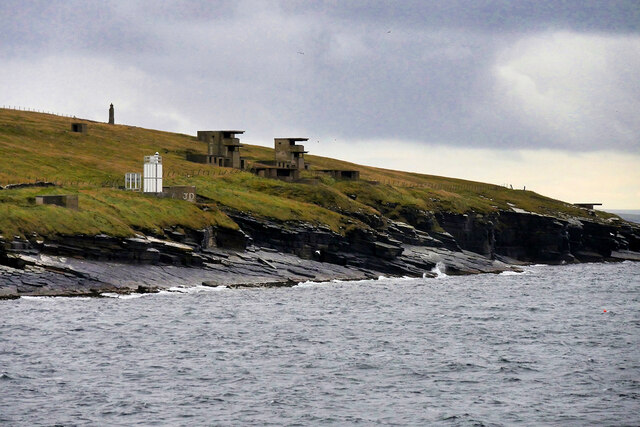
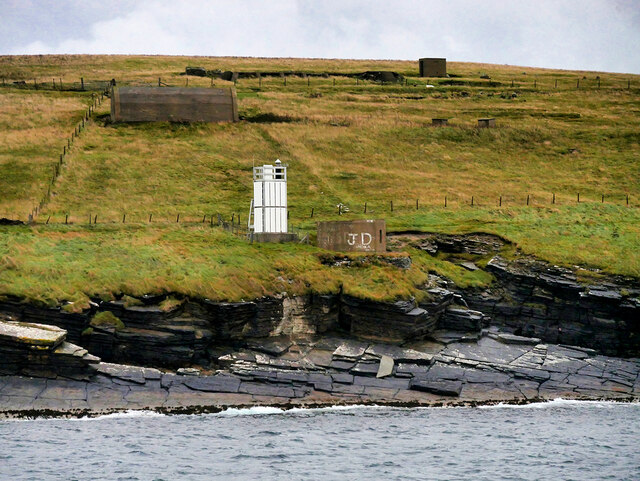
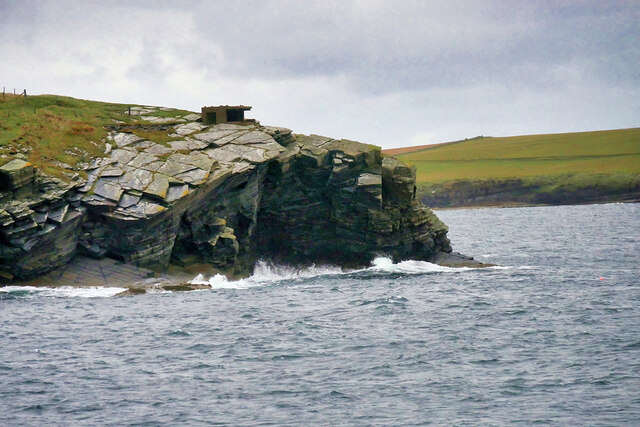
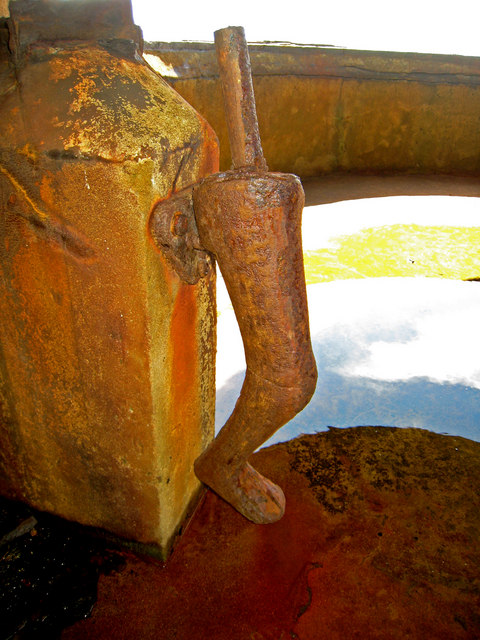
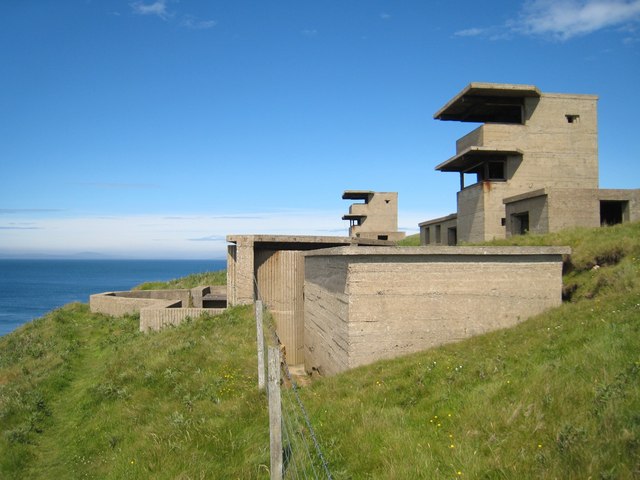
Vamh is located at Grid Ref: ND4192 (Lat: 58.818871, Lng: -3.022122)
Unitary Authority: Orkney Islands
Police Authority: Highlands and Islands
What 3 Words
///bottled.hairstyle.screaming. Near St Margaret's Hope, Orkney Islands
Nearby Locations
Related Wikis
Hoxa, Orkney
Hoxa is a small settlement on the island of South Ronaldsay in the Orkney Islands north of mainland Scotland. Hoxa is located 1+1⁄4 miles (2.0 km) west...
Herston, Orkney
Herston is a village on South Ronaldsay, Orkney, Scotland, United Kingdom. Herston is historically a fishing village but its only industry to speak of...
Nevi Skerry
Nevi Skerry is a skerry situated in Scapa Flow in the Orkney Islands. The skerry is situated approximately 1 km (0.62 mi) east of Flotta and approximately...
St Margaret's Hope
St Margaret's Hope is a village in the Orkney Islands, off the north coast of Scotland. It is known locally as The Hope or The Hup. With a population...
Whome
Whome is the largest settlement on the Orkney island of Flotta, Scotland. The village is situated on the B9046, the main road across Flotta. Views from...
Hunda
Hunda is an uninhabited island in the Orkney archipelago in Scotland. It is 100 hectares (0.39 sq mi) in extent and rises to 42 metres (138 ft) above sea...
Calf of Flotta
The Calf of Flotta is a small island in Scapa Flow, Orkney. The Calf is next to Flotta, with "Calf" deriving from Old Norse/Norn and meaning a smaller...
Switha
Switha is a small uninhabited island towards the south of Orkney, Scotland, approximately 41 hectares in area. == Geography and geology == Switha lies...
Related Videos
A Fisherman's Song To Attract Seals & Drummond Castle
Twee jigs gespeeld bij Rinibar House, Hoxa, op de laatste dag van onze zoveelste vakantie naar Schotland. Deze keer verbleven ...
Hoxa Head WWII Coastal Battery, Orkney - DJIMINI3 Pro - June 2023 - History within beauty
Day 4 of our Orkney trip, and time to look at the other main historical relics, those associated with the First and Second World Wars ...
Nearby Amenities
Located within 500m of 58.818871,-3.022122Have you been to Vamh?
Leave your review of Vamh below (or comments, questions and feedback).
